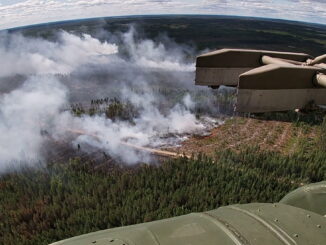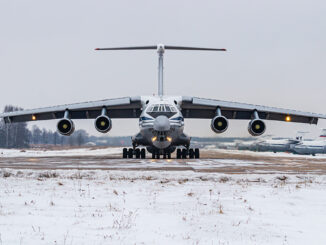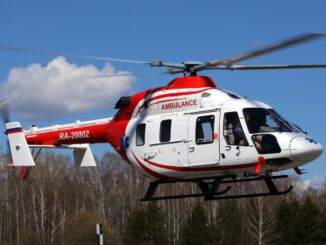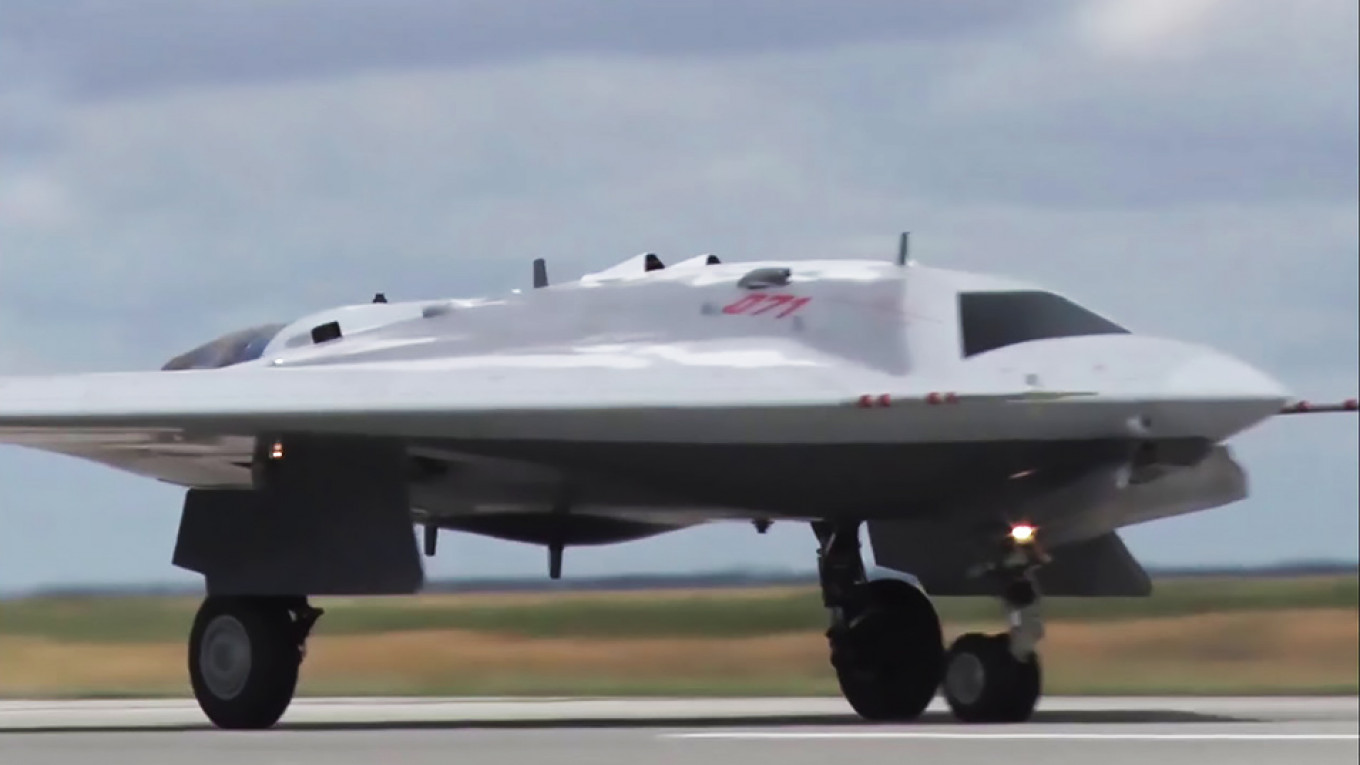
On August 3, 2019 the Russian Sukhoi S-70 Okhotnik-B (Hunter-B) made its first flight from one of the airfields under control of the Russian MoD (most probably Chkalov State Flight Test Centre at Akhtubinsk, Astrakhan Region).
S-70 took off at 12:20 Moscow time and made several circles around the airfield at the altitude of 600 metres and landed successfully. During its maiden flight, S-70 was controlled by a ground-based operator.
According to TASS news agency Okhotnik-B is scheduled to make several more flights this year to assess its flying characteristics and test its autonomous control capabilities. It is said that a fully autonomous flight (from takeoff to landing) could be performed in 2019.
Sukhoi S-70 Okhotnik-B is a prototype of a Russian heavy unmanned combat aerial vehicle (UCAV) based on an earlier Mikoyan Skat design. S-70, developed by KB Sukhoi Design Bureau is a flying wing airframe and incorporates use of composite materials and stealth coating that should decrease its RCS (however a relatively many inlets as well as an uncovered exhaust nozzle observed on the prototype tend to suggest that S-70 is not, at the moment, typical stealth aircraft). It is relatively big, with length of 14 metres and wingspan of 19 metres. Its maximum takeoff weight is 25,000 kg including 2,800 kg of weapons.
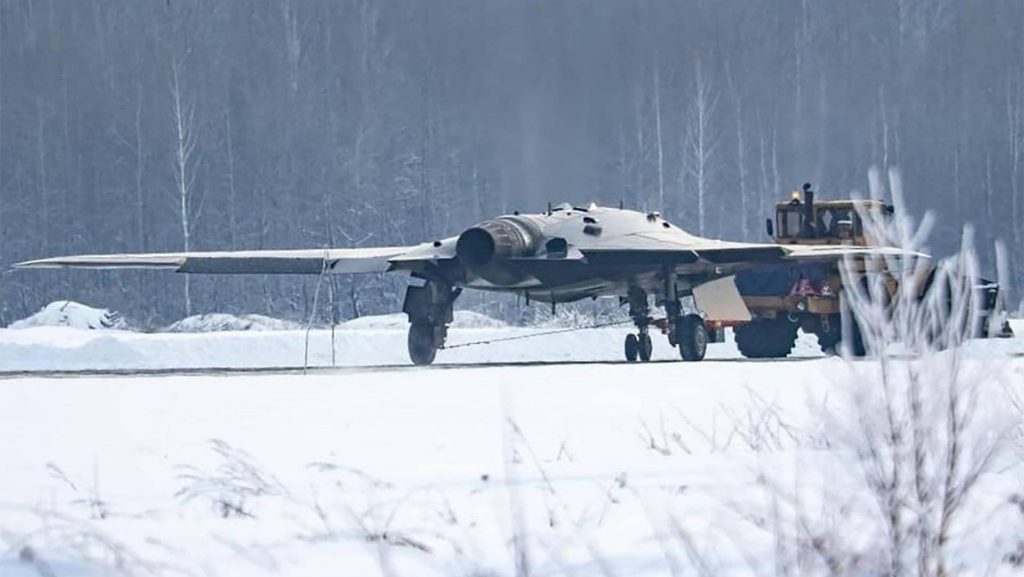
Okhotnik-B is powered by either AL-31F turbofan (as used on Su-27) or AL-41F (Su-35’s and Su-57’s engine). S-70 is to be capable to reach speeds of 1,000 km/h, however some sources claim that its maximum speed at high altitude could be supersonic (ca. 1,400 km/h). Its range is estimated at 5,000 km. The avionics suite for S-70 was designed and is developed by Radio-Electronics Technologies Concern (KRET) from Moscow.
It is not clear whether S-70 Okhotnik-B is a prototype of a new Russian UCAV or just a technology demonstrator which, in turn will be used to design a proper future combat drone. Nevertheless Okhotnik-B is claimed to have a capability to perform autonomous strike missions as well as to act as a “loyal wingman” controlled by a parent aircraft, most probably Su-57 fifth generation fighter aircraft.
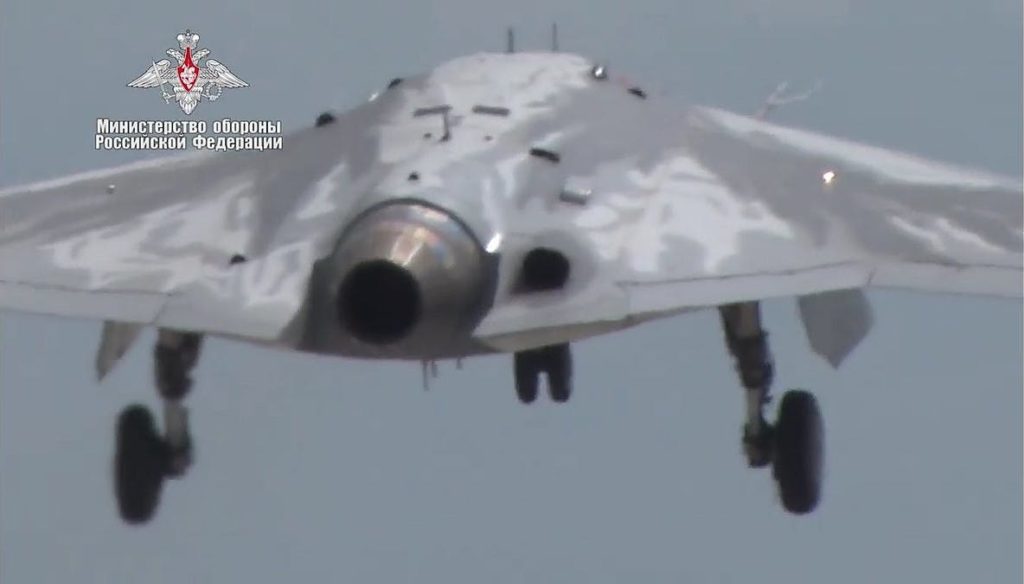
Note that one of the Su-57 aircraft, no. 053, received a new paint scheme some time ago including S-70’s shape on bottom and upper surfaces as well as an interesting sign on its starboard rudder featuring Su-57 and S-70 silhouettes. This Su-57 example has also an extra antenna just aft of the cockpit which is believed to serve as a datalink with Okhotnik-B.
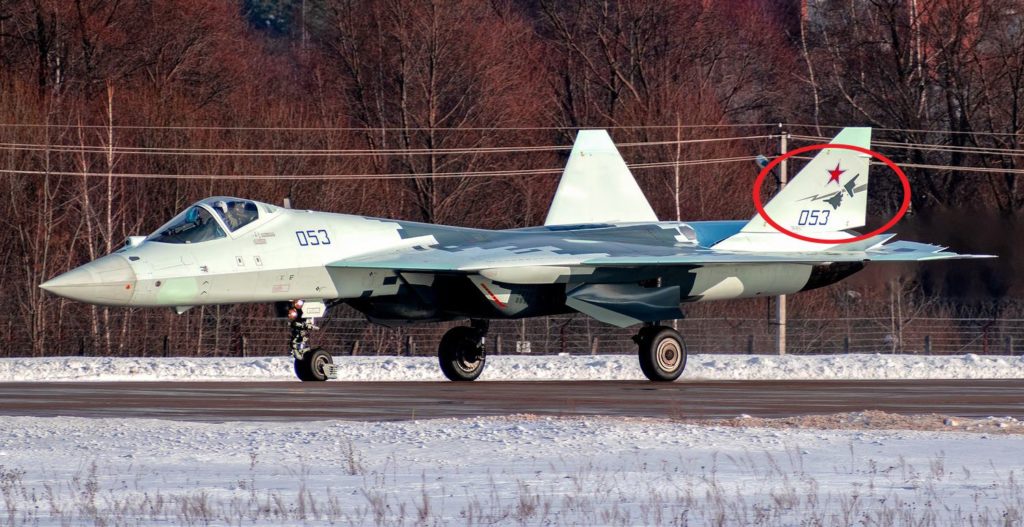
We will update you on further developments in S-70 programme.

